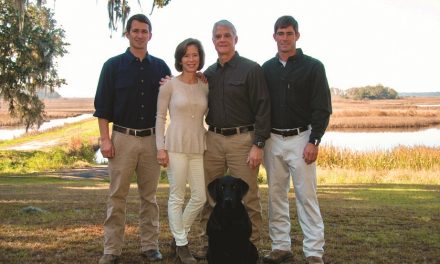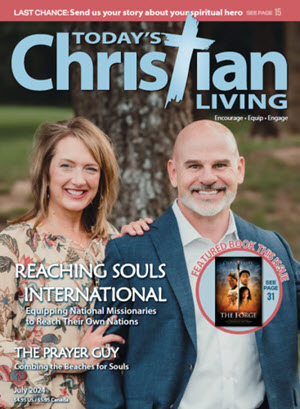As our New Man takes root, God provides the “fertilizer” we need to grow.
From New Man Journey by Steve Silver
Do you have a lawn? Did you used to? Maybe you’re a city dweller, condo owner, or renter who’s not lawn-challenged. Maybe you hire someone to keep your lawn perfect. Perhaps your mostly crabgrass yard doesn’t bother you or you got out of the lawn business with your last move. If you’re a weekend yard warrior like me, however, you’ll definitely relate to the tribulations and rewards of achieving and maintaining a beautiful lawn.
I admit it. I’m lawn-obsessed, never completely satisfied. Just when I get it nearly perfect, usually in late May, conditions beyond my control (heat, lack of rain, grubs, tenacious weeds) alter it for the rest of the summer. It’s the second law of thermodynamics—any closed system such as a universe, a body, or a lawn and garden has a growing tendency toward disorder at the price of order. So I resign myself to two months of beautiful lawn in May and October and battle the elements and entropy (decline, degeneration) from June through September.
We have three sections of yard: front, back, and lakefront. When we developed our lake waterfront we put down good soil and used rolls of sod for that section of lawn. It’s only eighty by eighty feet, but it’s our most important piece of lawn because of the waterfront activity of family and friends during the summer. The richer, thicker, greener, and weed-free that lawn is, the better. For five years, the sod worked well. Then it started showing signs of strain. By the end of the sixth summer, bare spots began appearing. These got larger the seventh year. Then disaster struck. By the end of the eighth summer, hardly a patch of good grass could be found and the sod could be peeled off and crumbled in your hand.
Not good. Something had to be done.
I got Jay, who takes care of our fall and spring cleanups, involved. We took out the old sod, raked the whole area thoroughly, tilled the ground, added good topsoil mixed with peat moss and fertilizer, planted high-quality seed, covered that over with an inch more of good soil, put down straw mulch, watered every day for two weeks, and watched for new green shoots. Jay assured me this would work. I didn’t have as much faith.
But sure enough, after about three weeks, slow-growing but super-hearty grass started showing through the straw mulch. The new lawn was barely detectable at first, but it grew more each day. Three months later, our sorry, dead waterfront yard had become a beautiful carpet of fresh, young green shoots. Now, two years later, that grass is so rich, thick, healthy, and green that I need to cut it twice as frequently as the other sections. It’s a great source of personal satisfaction. When our family and friends play, sit, and visit on the green, I’m proud and thankful.
My lawn is a bit like the New Man growing inside of us. Like that new, beautiful waterfront lawn, barely visible at first, it takes time for him to settle in, take root, grow shoots, go deep, get stronger, and eventually take over the lawn of a life. This is the miraculous process whereby our New Man trumps our lower nature and becomes the prevailing behavioral force of our life. It’s the healthy lawn taking over what was once crabgrass-filled or, as in the case of my waterfront lawn, crumbling and dying grass.
My seed required good conditions for growth. It needed Jay’s straw mulch to keep it from getting blown around and burnt out by midday sun, watering in the morning and evening, and patience. Our New Man “seed” also needs the right conditions and materials for growth—proper care, feeding, and maintenance.
Achieving a perfect lawn isn’t a straight-line process. Neither is our Old to New Man transformation. Crabgrass doesn’t die off eas- ily. It, like bad habits and sins, tenaciously hangs on, reappears, and fights for survival. One step backward for every two or three steps forward. Some setbacks are the consequence of maintenance neglect. Our greatest challenge, though, is the continual battle against our lower nature, our “crabgrass.”
Fortunately, as we learned in chapter four, our New Man develops the experience and skills necessary to recognize and win those battles over time. We’re able to mitigate the frequency and effects of these intrusions with proper New Man maintenance. Our greatest resource in this process is the green thumb of our owner/gardener, our God, who transforms and tends our New Man. The Lord plants, tends, and brings to fruition the New Man. We become His handiwork:
For we are God’s handiwork, created in Christ Jesus to do good works, which God prepared in advance for us to do. (Eph. 2:10)
Copyright 2013 Steve Silver. New Man Journey published by David C Cook. Publisher permission required to reproduce. All rights reserved. www.davidccook.com








